Cake or biscuit? Why Jaffa Cakes excite philosophers
- Published
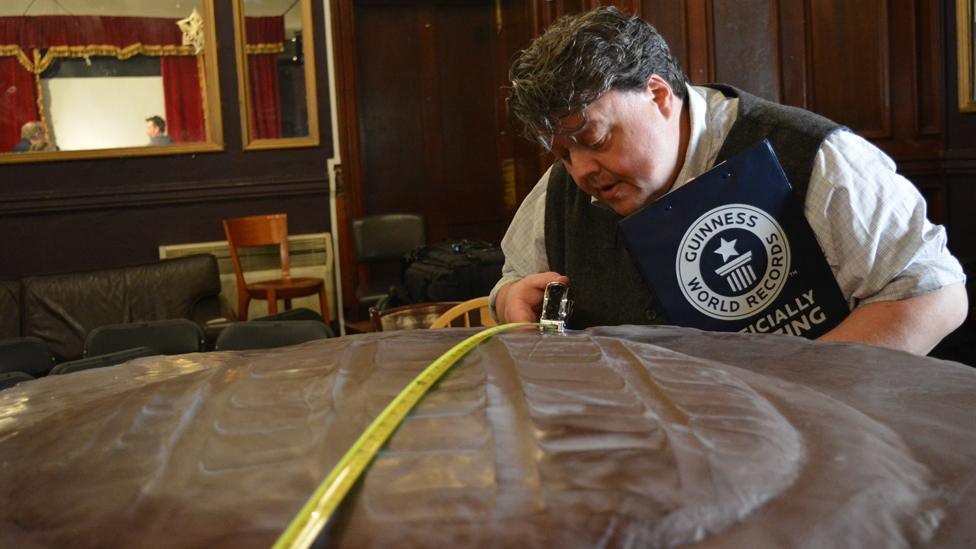
It's a delicious structure consisting of a small sponge with a chocolate cap covering a veneer of orange jelly. It is arguably Britain's greatest invention after the steam engine and the light bulb. But is a Jaffa Cake actually a biscuit, asks David Edmonds.
This question reheats a confectionery conundrum first raised in 1991. A tax is charged on chocolate-covered biscuits, but not on cakes. The manufacturer, McVities, had always categorised them as cakes and to boost their revenue the tax authorities wanted them recategorised as biscuits.
A legal case was fought in front of a brilliant adjudicator, Mr D C Potter. For McVities, this produced a sweet result. The Jaffa Cake has both cake-like qualities and biscuit-like qualities, but Mr Potter's verdict was that, on balance, a Jaffa Cake is a cake.
He examined a dozen possible criteria, external. There was, for example, the name. They are called Jaffa Cakes, not Jaffa Biscuits. This, Mr Potter concluded, was a trifling consideration, though he noted that Jaffa Cakes are more biscuit than cake in several ways. They are packaged like biscuits, and they are marketed like biscuits: they are usually found in the biscuit aisle in shops.
On the other hand, they have fundamental cake-esque qualities. Thus, they have ingredients of a traditional sponge cake: eggs, flour and sugar. And when Jaffa Cakes go stale they become hard, unlike biscuits, which become soft.
Does size matter? Jaffa Cakes are more biscuit-sized than cake-sized. Linked to this, cakes are often eaten with a fork, while biscuits tend to be held in the hand. To test the significance of size, I asked the winner of The Great British Bake Off 2013, Frances Quinn, to bake the most ginormous Jaffa Cake the world has ever seen - the size of a flying saucer, at 124cm in diameter, weighing in at 50kg, and containing 120 eggs and 30 litres of jelly.
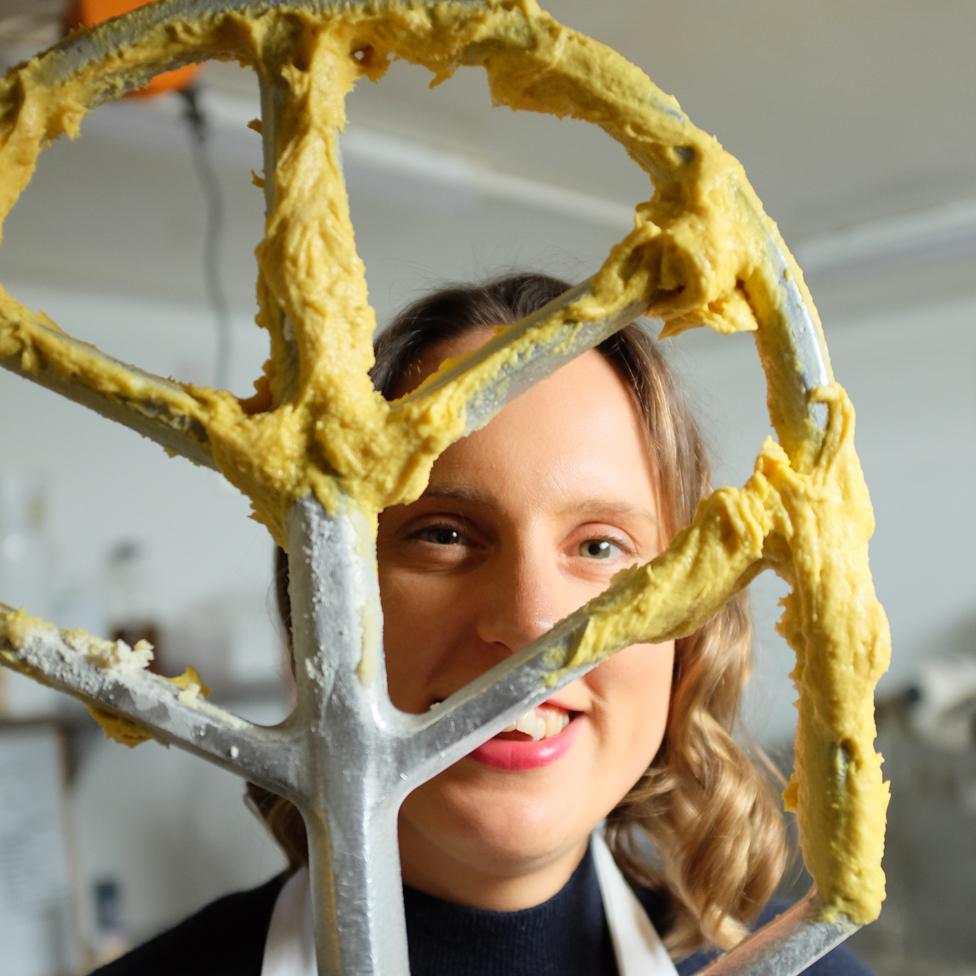
Frances Quinn brandishes a suitably giant mixer attachment
Tim Crane, Knightbridge Professor of Philosophy at Cambridge University, does not believe that this XXXXXXXXXXXL Jaffa Cake is any more cake-like than its normal-sized Jaffa Cake sibling. "These days you see all sorts of tiny cakes for sale, some of them much smaller than Jaffa Cakes," he says. "And there's nothing incoherent about a giant biscuit."
How do you make the world's biggest Jaffa Cake?
The immediate implication of Mr Potter's ruling was financial. But Prof Crane says the question "Cake or Biscuit?" touches on a profound philosophical problem. "How do our concepts relate to reality?" Which aspects of our classification of the world come from the world itself and which come from us?
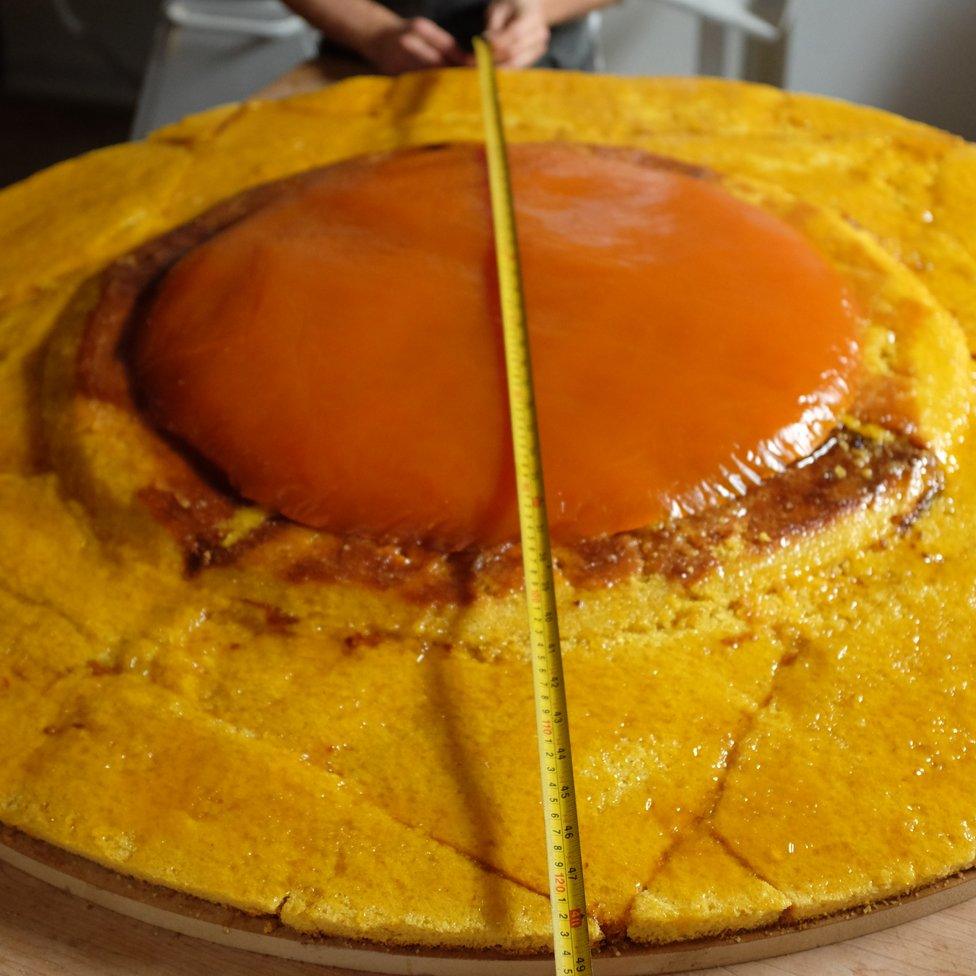
There is no record of the 20th Century philosopher, Ludwig Wittgenstein, ever tasting a Jaffa Cake, though there is evidence that he was partial towards a bun. But his ideas are relevant to the Jaffa Cake puzzle.
We are tempted to think that every concept must have a strict definition to be useable. But Wittgenstein pointed out that there are many "family-resemblance" concepts, as he called them. Family members can look alike without sharing a single characteristic. Some might have distinctive cheek bones, others a prominent nose, etc. Equally, some concepts can operate with overlapping similarities. Take the concept of "game". Some games involve a ball, some don't. Some involve teams, some don't. Some are competitive, some are not. There is no characteristic that all games have in common.
And there is no strict definition of "cake" or "biscuit" that compels us to place the Jaffa Cake under either category.

Find out more
Ponder the philosophy of the Jaffa Cake in the Philosopher's Arms on BBC Radio 4 at 20:00 on Monday 20 February
Or catch up later here

Another temptation is to believe that all that is at stake here is an arbitrary issue of semantics. It is, the thought goes, a mere verbal convention whether one labels a Jaffa Cake a cake or a biscuit. It has nothing to do with the real world.
The distinction between statements that are true as a matter of convention or language ("All triangles have three sides"), and those that make a claim about the empirical world ("It is possible to eat 13 Jaffa Cakes in a minute, external") - is a longstanding one in philosophy. But in the middle of the last century the American philosopher Willard Van Orman Quine disputed whether such a rigid distinction could be maintained - and Tim Crane agrees with him that it cannot.
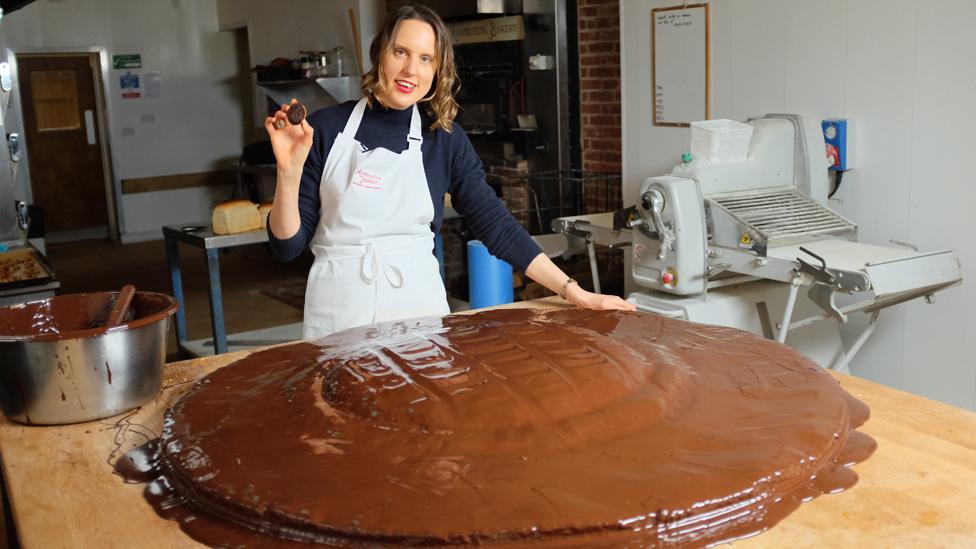
"Do you know what an Umiak is?" Tim Crane asks? "No? Well, it's a flat-bottomed Inuit canoe. So have I told you something about the word, or have I told you something about the world? Well, I think you've learned something about both." And if it's true to say, "a Jaffa Cake is a cake" (or "a Jaffa Cake is a biscuit") then that also tells us something about the world, i.e. about the properties of a Jaffa Cake, as well as about the meaning of the word "cake".
But could Jaffa Cakes be neither cakes nor biscuits - and instead something in between?
It may be interesting to compare Jaffa Cakes with people here, even though they differ in several ways - most Jaffa Cakes have no opinion about how they should be identified, for example, and most humans are not topped by a thin but scrumptious layer of chocolate.
Until recently, people have not been free to choose their gender, and have been restricted to being described as either male or female.
More and more discoveries in science are undermining this binary mapping. It used to be thought that men were defined by their having a Y chromosome. Now we know that whether an embryo develops as a male depends upon a single gene: the SRY gene. It's possible for a person with XY chromosomes to have the appearance of a woman if they are lacking this gene. Similarly, a person with XX chromosomes can have the appearance of a male if they carry this gene.
There are many genes at play when it comes to the male versus female development. Genetics, hormones, chromosomes can all combine to complicate a complicated picture. As a result, says Dr Helen O'Neill, a geneticist at University College London, "I think we should revise our definitions of male and female, there are many gradations in between". In fact, for some purposes, she thinks we should get rid of the male-female distinction, for example on passports. After all, she says, we are all homo sapiens.
Is it a cake or is it a biscuit?
Multifaceted expressions of identity inject a further layer of complexity. Mx Pips Bunce, who is married with two children and works for Credit Suisse as head of Global Markets Integration Components, identifies as "gender-fluid". Sometimes Pips wakes up choosing to express as Pippa and other times as Phil.
The world at present is set up for binary categorisation despite as many as 4% of people now identifying as non-binary, according to some studies. Two obvious and tricky areas are bathrooms and sport. Pips uses the female bathrooms as Pippa and the male ones as Phil, whereas some people who identify as non-binary or trans would rather bathrooms were intersex. The topic of which bathrooms transgender people use is highly contentious.
Equally contentious are intersex athletes in sport, like the South African Olympic 800m champion, Caster Semenya, who competes as a woman. Is it possible, or desirable, to break down the binary categories in sport - to introduce new categories perhaps? The idea is not preposterous. Boxing, with its different weights - flyweight, heavyweight etc. - is one of several sports carved up into more nuanced groupings than simply male/female.
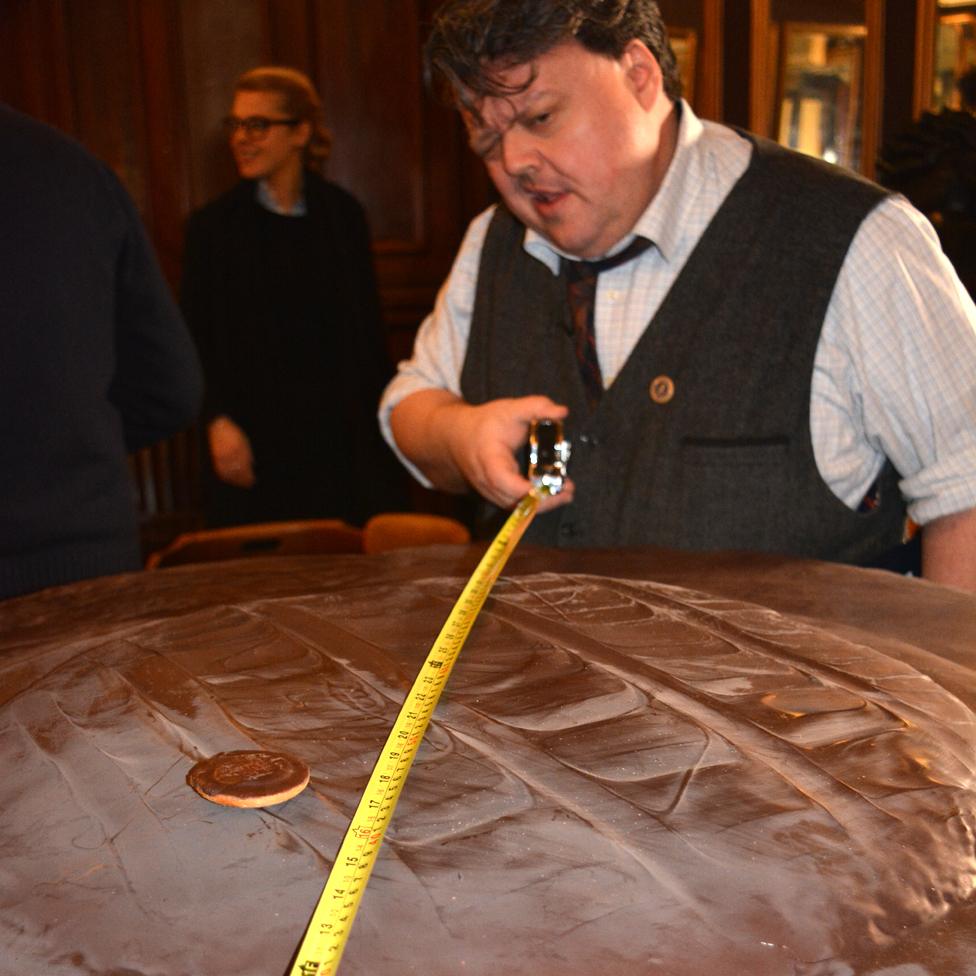
Craig from Guinness World Records measures the Jaffa Cake
But back to the Jaffa Cake mystery. Cake or biscuit? "Definitely cake," says Tim Crane, echoing the judgement of Mr Potter. This is an assertion about the world, not just about language. A Jaffa Cake, in its essence, is more cake-like than biscuit like. Its cake features are more elemental than its biscuit features.
And with that riddle solved, the Knightbridge Professor of Philosophy shrinks the world's largest Jaffa Cake by taking a giant bite.
David Edmonds is the producer of The Philosopher's Arms on BBC Radio 4